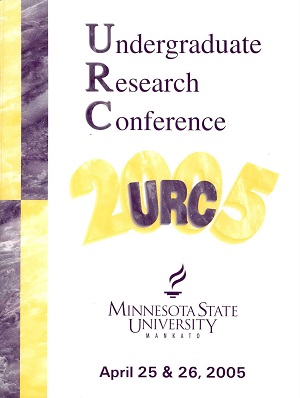Methods for Analysis of Renal Microvasculature of Aging Rats Using Microcomputed Tomography and Analyze 6.0
Location
CSU 285
Start Date
25-4-2005 10:30 AM
End Date
25-4-2005 12:00 PM
Student's Major
Biological Sciences
Student's College
Science, Engineering and Technology
Mentor's Name
Michael Bentley
Mentor's Department
Biological Sciences
Mentor's College
Science, Engineering and Technology
Description
Microcomputed tomography is a promising method used to evaluate renal vascular architecture and can be used to derive quantitative information from resulting images. One of the advantages of microcomputed tomography is that an entire rodent kidney may be studied without physically disrupting its structure. To obtain quantitative information, the ANALYZE 6.0 software program yields a number of computer techniques, which allow the analysis of these three-dimensional images. Measurements obtained can be used to determine the volume and fraction of vasculature within an entire kidney and its tissue components. The diameter of the glomerular units and the total number of glomeruli in a kidney can also be determined by analyzing small sections throughout the entire kidney. Because microfil remains within the vascular compartments, the fraction of vasculature can be derived from vascular opacity measurements of the cortical and medullary tissue. The fraction of vasculature in the glomerular and peritubular tissue was determined in this manner. Glomerular diameters were determined by counting the number of sections through individual glomeruli and by multiplying the number of sections by section thickness. To determine the total number of glomeruli in the kidney, glomeruli were counted in sample volumes systematically taken throughout the entire cortex and the number of glomeruli in the sample volume then multiplied the average cortical volume. In conclusion, these methods provide three-dimensional quantitative information about the kidney that has previously been difficult to obtain.
Methods for Analysis of Renal Microvasculature of Aging Rats Using Microcomputed Tomography and Analyze 6.0
CSU 285
Microcomputed tomography is a promising method used to evaluate renal vascular architecture and can be used to derive quantitative information from resulting images. One of the advantages of microcomputed tomography is that an entire rodent kidney may be studied without physically disrupting its structure. To obtain quantitative information, the ANALYZE 6.0 software program yields a number of computer techniques, which allow the analysis of these three-dimensional images. Measurements obtained can be used to determine the volume and fraction of vasculature within an entire kidney and its tissue components. The diameter of the glomerular units and the total number of glomeruli in a kidney can also be determined by analyzing small sections throughout the entire kidney. Because microfil remains within the vascular compartments, the fraction of vasculature can be derived from vascular opacity measurements of the cortical and medullary tissue. The fraction of vasculature in the glomerular and peritubular tissue was determined in this manner. Glomerular diameters were determined by counting the number of sections through individual glomeruli and by multiplying the number of sections by section thickness. To determine the total number of glomeruli in the kidney, glomeruli were counted in sample volumes systematically taken throughout the entire cortex and the number of glomeruli in the sample volume then multiplied the average cortical volume. In conclusion, these methods provide three-dimensional quantitative information about the kidney that has previously been difficult to obtain.
Recommended Citation
Taylor, Michelle and Ian Lalich. "Methods for Analysis of Renal Microvasculature of Aging Rats Using Microcomputed Tomography and Analyze 6.0." Undergraduate Research Symposium, Mankato, MN, April 25, 2005.
https://cornerstone.lib.mnsu.edu/urs/2005/oral-session-D/1



